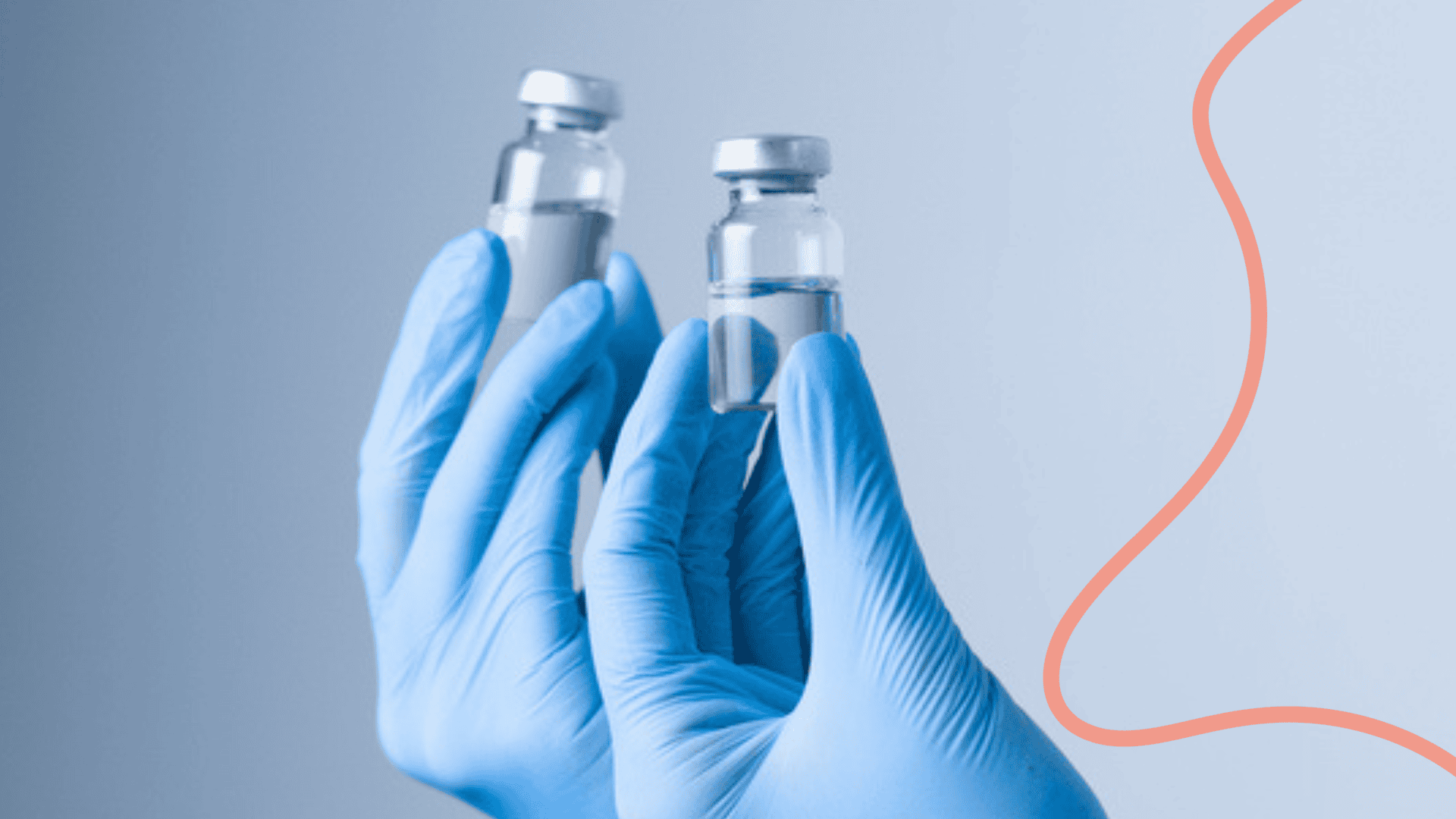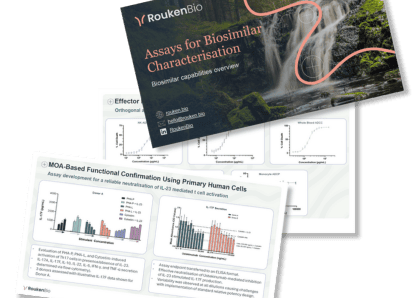Complex primary cell assays: strategic tools for biosimilar comparability
Watch our latest Labroots webinar exploring how complex primary cell assays support biosimilar comparability and functional similarity for biologics.

|
October 7, 2025
|
5 min read
Watch our latest Labroots webinar on biosimilar comparability, presented by our Senior Study Manager, Fiona Miller.
Key points include:
The shift in biosimilar regulations
The structural and functional characterisation steps in biosimilar development
The role of complex primary cell assays in biosimilar evaluation
What are biosimilars?
A biosimilar is a biological medicinal product that is highly similar to an already authorised reference biologic, with no clinically meaningful differences in safety, purity, or potency. Unlike small-molecule generics, which are chemically synthesised and can be replicated exactly due to their simple, well-defined structures, biosimilars are large, intricate proteins produced in living cells. The inherent complexity and variability of biological manufacturing make it impossible to create an absolutely identical copy; thus, biosimilars are developed to be highly similar, not identical.
Shift in biosimilar regulations
The foundation of biosimilar development is comprehensive physicochemical and functional studies. These analyses use a range of orthogonal methods to compare the biosimilar and reference product across a wide range of quality attributes. The goal is to ensure that any differences detected are not clinically meaningful.
Animal studies, once a routine part of biosimilar development, have now been largely phased out as a regulatory requirement. This reflects both advances in analytical technology and a better understanding of what constitutes meaningful evidence for biosimilarity.
Next, clinical pharmacokinetic (PK) studies remain essential. They are highly sensitive for detecting differences between products and are considered more informative than traditional clinical efficacy endpoints in many cases.
Finally, while comparative clinical efficacy studies (CES) have traditionally been required, especially for complex biologics like monoclonal antibodies, their actual value is increasingly being questioned. This is in part because there is a lack of suitable pharmacodynamic markers that could serve as reliable surrogates for efficacy, meaning CES remains the default even when robust analytical, functional, and PK data are available.
However, recent regulatory experience and analysis of biosimilar submissions suggest that, in most cases, the routine use of CES may not add meaningful value to the approval process.
Structural & functional characterisation steps in development
One of the unique aspects of biosimilar development is that, unlike with new biologics, we start with a wealth of information about the reference product. This allows definition of an initial set of quality attributes, even before the biosimilar product is fully developed.
As we progress with a detailed structural and functional characterization of the reference product, this helps to shape our Quality Target Product Profile. Also, throughout development, we refine our understanding of which attributes are most critical. This criticality assessment considers both the potential clinical impact of each attribute and the uncertainty in the evidence linking it to clinical outcomes. There are different approaches to criticality assessment, and regulatory guidance can vary slightly.
Once we have suitable biosimilar material, the analytical similarity assessment is performed.

Complex primary cell assays in biosimilar evaluation
Functional assays play a critical role in confirming the biosimilar interacts with its target with the same affinity and kinetics as the reference product. Complex primary-cell assays are a subset of functional assays that bridge the gap between analytical characterisation and clinical relevance by modelling drug action in a physiologically meaningful context.
Ensuring functional similarity
Regulators increasingly recognise that such assays can demonstrate functional biosimilarity in ways that simpler tests or even clinical trials cannot, thereby strengthening the totality of evidence.
Firstly, ensuring functional similarity as a safety net for residual differences, and how they can be applied as an investigative tool. Complex primary assays are specifically requested by regulatory agencies when effector function is part of the mechanism of action, which includes antibody dependent cellular cytotoxicity assays. These assays can also help us to probe differences in physiological systems, especially when analytical or functional data raise questions about potential clinical impact.
Supporting indication exploration
Complex assays can also be used to support indication extrapolation. Complex primary cell assays can provide mechanistic evidence that supports the use of a biosimilar across multiple indications, even when clinical data is only available for one, or as regulatory expectations evolve, in the absence of any CES. For example, they can demonstrate that the mechanism of action is preserved in disease-relevant cell systems, helping justify extrapolation to other approved uses.
Understanding physiological significance
Additionally, these assays can be used for confirming the presence or absence of biological activity.
Complex primary cell assays are essential for verifying whether a biosimilar does, or does not, have a specific biological function. When there is even a minimal potential for biological activity in a biosimilar, it must be thoroughly assessed. This is precisely where complex primary cell assays offer significant value, they provide a more physiologically relevant context to evaluate such activity. These assays can be applied to assess effector function potential, and how the resulting data can inform and support regulatory decision-making.
Join our community of curious minds on LinkedIn
🗓️ Stay informed with our monthly scientific newsletter, published on LinkedIn on the last Wednesday of each month.
These editions bring you the latest in drug development breakthroughs, industry trends, and expert insights from the brilliant minds at RoukenBio.
Subscribe today on LinkedInAssays for Biosimilar Characterisation
Explore our biosimilar expertise in depth with a detailed slide deck featuring sample data and a real-world case study.
Access the Biosimilars slide deck

